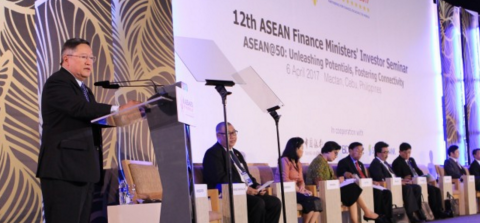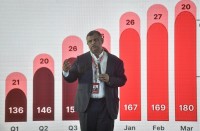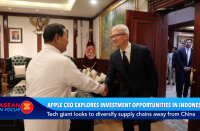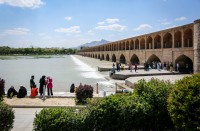
(Eagle News) — With a market which is even bigger than that of the United States, the Association of Southeast Asian Nations (ASEAN) is working vigorously toward integrating the region’s economies to bring the benefits of growth to the 650 million people in this 10-nation bloc.
This was how Finance Secretary Carlos Dominguez III explained the “compelling” reason to implement the ASEAN goal of a single market and production base under the ASEAN Economic Community (AEC).
“We are working very hard together so that in the whole ASEAN community, 650 million people are going to be more integrated with each other economically and financially. That’s really what we are working towards,” said Dominguez in an interview after the end of the series of meetings among ASEAN finance ministers and central bank governors at the Shangri-La Mactan Resort in Lapu-Lapu City last week.
“So we are building [the ASEAN market] because there’s strength in unity, it’s a market with a 650-million population, and that’s a huge market, bigger than the US market. The income of the US is very high, but here, we are growing very fast,” Dominguez added.
ASEAN confident of realizing one economic bloc dream
The finance chief said ASEAN is “confident that all the work we’ve put in to support the realization of the vision will reap significant benefits for our people.”
The Philippines’ total external trade in goods with ASEAN member-states amounted to US$14.26 billion in 2016, or 21.7 percent of the country’s entire trade, according to data from the Philippine Statistic Authority.
Finance ministers and central bank governors of the ASEAN member-states of the Philippines, Brunei, Cambodia, Indonesia, Lao PDR, Malaysia, Myanmar, Singapore, Thailand and Vietnam had met separately and jointly in Lapu-Lapu City, Cebu on April 6 and 7 for a series of meetings to find ways of fast-tracking initiatives on financial integration and inclusion within this regional bloc.
The Philippines is this year’s chair and host of the ASEAN, which is celebrating its 50th founding anniversary with the theme “Partnering for Change, Engaging the World.”
Dominguez and Bangko Sentral ng Pilipinas Governor Amando Tetangco Jr., co-chaired the 3rd ASEAN Finance Ministers and Central Bank Governors’ Meeting (AFMGM) in Lapu-Lapu City.
ASEAN financial integration also in the works
The ASEAN is also working on achieving financial integration and stability.
Dominguez said the joint statement issued by the ASEAN finance ministers and central bank governors encapsulated the ongoing and planned efforts of the bloc to achieve this. He said the finance ministers and central bank governors are also optimistic that they could hurdle current challenges in the global economy.
Dominguez said the joint statement “enumerates several initiatives to further harmonize [ASEAN’s] finance and monetary policies.
“These initiatives built on the foundation of prior achievements such as the ASEAN Banking Integration Framework. We have quite notably convened a working committee [on] financial inclusion to broaden the base of our financial systems and bring all our communities into the mainstream of development,” Dominguez said.
“The vision of an ASEAN Economic Community is a compelling one. We are confident that all the work we’ve put in to support the realization of this vision will reap significant benefits for our people,” he added.
The ASEAN finance ministers and central bank governors earlier reaffirmed their commitment to promote growth and strengthen financial integration and stability in the region to guard against risks in the global economy.
The risks arose from possible protectionist policies and volatilities by member nations. But ASEAN is ensuring that economic benefits accruing from a financially integrated ASEAN will be shared equitably among its peoples.
In their joint statement, they also committed to “remain steadfast” in pursuing ASEAN’s goals to achieve a “highly integrated, cohesive economy” that is “competitive, innovative, dynamic, with enhanced connectivity and sectoral cooperation.”
The statement also mentioned ASEAN’s “resilient, inclusive, people-oriented, people-centered and connected with the rest of the world.” It said ASEAN would rise above the challenges of protectionism and geopolitical developments that could derail the recovery of the global economy.
ASEAN to deepen regional financial cooperation
“As such, we shall continue to promote economic growth, financial integration, strengthen financial stability, implement appropriate monetary, fiscal and macroprudential policies in our jurisdictions, and intensify financial cooperation to further advance our region’s resilience,” the joint statement read.
The finance and central bank chiefs likewise pledged to deepen regional financial cooperation to realize an ASEAN Economic Community 2025, pursue the creation of an interconnected, inclusive and resilient regional capital market, and ensure the efficient development of the Green Bond initiatives.
They also came up with a “financial inclusion initiative” to deliver more financial products and services to under-served communities within the ASEAN and reaffirmed their vision of liberalizing progressive financial services.
The finance and central bank chiefs also noted the sustained expansion of the ASEAN economy at 4.6 percent in 2016 amid global uncertainties.
They also stressed that domestic demand will continue to be a key driver to regional growth, while structural reforms, public spending and fiscal stimulus will enhance investments in the region.
But despite these positive trends, they also cited “risks” emerging from a rising tendency toward protectionism, the normalization of policy rates, and “geopolitical developments, which could derail the recovery of the global economy.”
The region’s finance and central bank heads also reiterated their support for the ASEAN Finance Ministers’ Investors Seminar as an important platform to communicate developments and future prospects of doing business in ASEAN.” (based on a DOF report)







